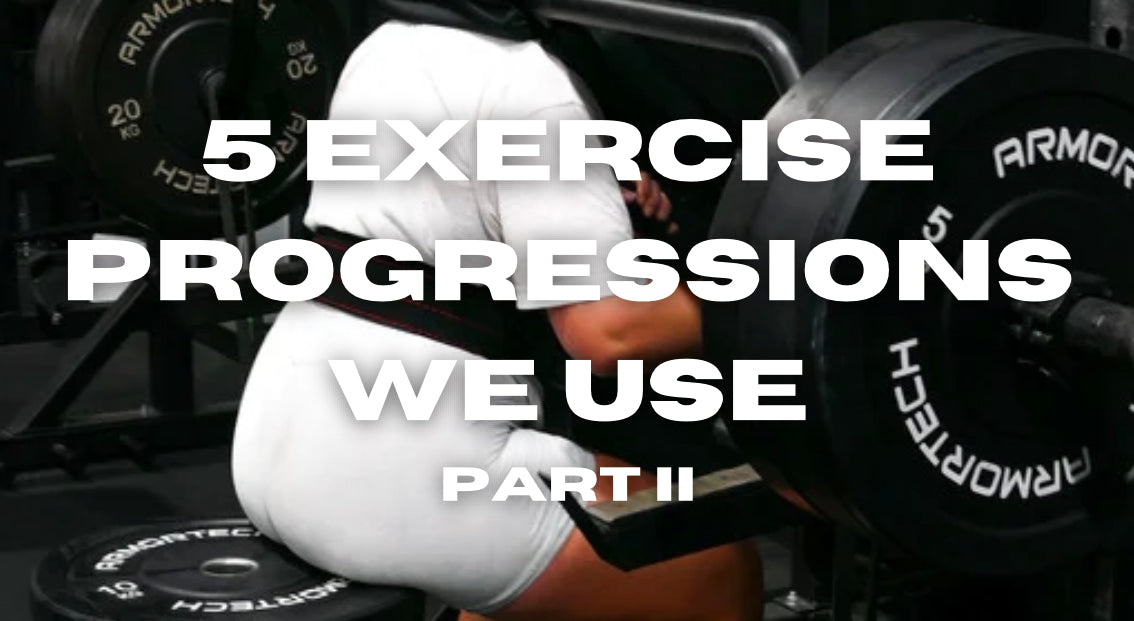
5 Exercise Progressions We Use - Part 2
A key value point we're driving within the upcoming Exercise Database Seminar is exercise progressions through a slightly different lense.
Opening up the exposure and the variety of exercises most coaches will have in their mind. Before showing them how to utilise them and where.
Adding a new layer of thought process for some behind progressive overload and showing coaches and physiotherapists how to use exercises themselves as progressions in load, skill or stress.
1. Box Squats - Pin Squats
The box squat is a very loadable exercise. After a 6-8 week block exposing athletes to this shortened range of motion you see them hit a new level strength very quick. This unloading of weight into the box before looking to drive a large recruitment of muscle fibres and challenge the RFD is one of our core reasons for using it.
We can push this RFD a layer deeper but having the complete momentum between the eccentric-concentric removed.
As they hit the pins, unload the weight, then require to drive with a large amount of intent to get the load of the racks quick. We can easily drive a faster recruitment level.

2. Single Leg Hamstring Bridge - Single Leg Slider Hamstring Oscillations
Hamstring bridges are nothing new and something that used in a lot of field based programs. Becoming even more popular from Alex Natera is the drive to use a weighted recruitment level with exercises like the loadable Natera Hamstring Iso Push.
Oscillations provides this deeper layer of stress with the repetitive contract-relax motion of the movement. it's something we would switch in and out with isometric and switching variations for short period of times.

3. Half Kneeling Kettlebell Windmill - Standing Kettlebell Windmill
The windmill is an incredible exercise to challenge both shoulder stability and thoracic rotation that's integrated with the hips.
This is a pretty simple one.
But starting from a half kneeling position to reduce the demand of thoracic rotation needed to get into a deep position and challenge that shoulder stability well.

4. Aqua Bag 45 Degree Bounds - 45 Degree Bounds
Aqua bags become a great tool not only in it's perturbation demands. But also in its ability to force the nervous system to control the trunk either in a front loads (hug) or back loaded (like a squat). Especially in the front loaded position through lateral or side to side movements it can encourage a controlled trunk, a more positive body height and a higher demand in the hip.
Start with a front loaded in these 45 degree bounds before adding the arms into the equation and integrating much more effective reps and stimulus.

5. Sled Push March - Sled Push Sprint
We can build technique of sprinting and we can stress tissues required in sprinting. These are more a progression chain in loading the calves and hips in a general standpoint to help with the tolerance of stress in accelerating.
A heavy loaded, slow march not only allows us to easily encourage some good, simple shapes. But mainly stresses those calves and hips through longer ground contacts and heavier loads.
From there we unload it to what feels like an insignificant load and sprint with it. Getting a mix of load and speed. Stressing tissues under factor ground contacts and large stressors but in a low skill demand environment.
Whether it's for quality and speed with higher rest times. Or capacity with incomplete rest times.
Want to learn more about programming and exercises progressions.
Sign up to our Exercise Database Seminar here.
Written by Isaac Davidson.
